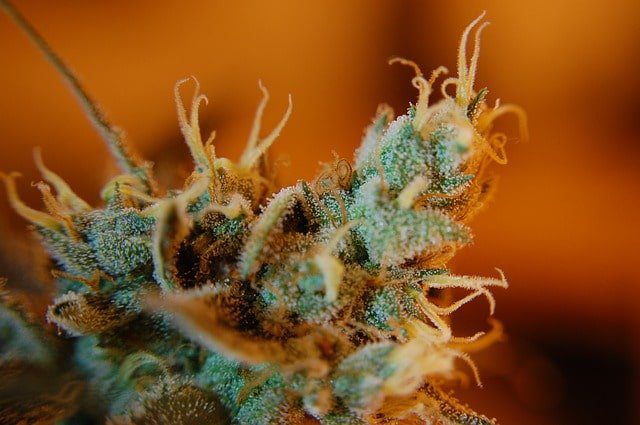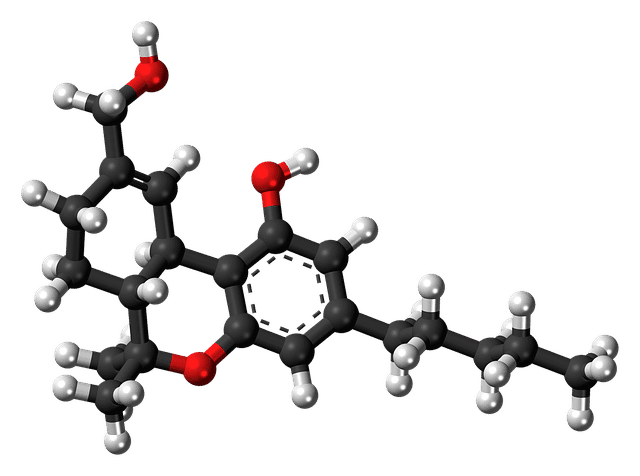Your Endocannabinoid system explained
The Endocannabanoid system (ECS) is a biological system of neurotransmitters and receptors found throughout the brains and nervous systems of all mammalian species. Scientists discovered that ithis system developed over 600,000,000 years ago in primitive species. The stepping stone for our understanding of the Endocannabinoid System was the discovery of delta-9-tetrahydrocannabinol (THC). Our understanding of the endocannaboid system began in the 1990’s when scientists wanted to learn about the effects of cannabis on the body. THC is one of 113 cannabinoids found in cannabis and was discovered by Dr. Raphael Mechoulam 50 years ago. Dr. Mechoulam found that THC interacted with the largest biological system of receptors in the human body, which is our Endocannabinoid System and continues to lead the way in cannabis therapy and research.
Endocannaboids and the receptors they bind to exist not only in our brains and nervous system; they can also be found in in our glands, immune cells, connective tissue and organs. The ECS permeates the 11 physiological systems of the body which include ourthe integumentary (skin, hair, nails, and exocrine cells – these cells produce sweat, oil, and wax), muscular (muscles), skeletal (bones), nervous (nerves), circulatory (blood, blood vessels, heart), lymphatic (the system that gets rid of toxins in our body), respiratory (lungs), endocrine (hormones), urinary/excretory (bladder, kidneys), reproductive (internal and external sex organs) and digestive (stomach, intestines). These systems handle the many functions that are necessary for our survival. The ECS maintains homeostasis (stable equilibrium/stability between interdependent physiological processes) which affects sleep, mood, appetite, memory, reproduction, inflammation, and pain. The ECS ensures that these systems are working in harmony with one another.
Endocannabinoids (Cannabinoids that our bodies produce naturally)
Groups of active compounds that interact with ECS receptors. They are produced naturally inside the body while compounds found outside the body such as THC and CBD are exogenous cannabinoids. CBD is a phytocannabinoid – this means that it originates from plants.
The two main types of endocannabinoids found within the body are Anandamide and 2-AG.
2-AG is the most prevalent and is responsible for managing appetite, our pain response and immune system functions.
Anandamide “the bliss molecule”, is responsible for blissful states that result from exercise, meditation, and yoga. It mimics the psychotropic effects of THC.
Enzymes
Any substance within the body that cause chemical reactions to occur. Enzymes in the ECS recycle used endocannabinoids once the body is through with them.
Receptors
Receive the messages transmitted by the cannabinoids. The two main receptors are CB1 and CB2 receptors.
CB1 receptors exist in the brain and spinal cord and work to regulate mood, memory, and reduce pain.
CB2 receptors exist in the immune system and many areas of the body working to reduce inflammation.
Inflammation is a process that the body undergoes to heal infected or damaged areas of the body and is the main cause for many different medical conditions.
The ECS performs many different tasks within our bodies, but its main goal is always homeostasis.
How they work: Endocannabinoids and cannabinoids are like keys within the ECS and receptors are the locks. When a key (endocannabinoid/cannabinoid) fits into the lock (receptor), the lock (receptor) causes an effect to occur within the body.
Cannabinoids (or phytocannabinoids)

In life we experience numerous stressors that may go beyond our threshold and ability to achieve homeostasis. We may become exhausted and drained, experiencing a number of possible health challenges. Over time, stress, toxicity, and poor diet and lifestyle choices can actually cause endocannabinoid deficiencies. Cannabis and its cannabinoids can actual have therapeutic benefits where endocannabinoids are deficient. Cannabis use for medicinal purposes dates back at least 3,000 years. It was introduced into Western medicine in 1839 by W.B. O’Shaughnessy, a surgeon who learned of its medicinal properties while working in India for the British East India Company. Its use was promoted for reported analgesic, sedative, anti-inflammatory, antispasmodic, and anticonvulsant effects. Cannabis produces a spectrum of biological compounds that are produced within our own bodies. It is able to support our internal homeostasis because we already have the biological infrastructure to support the organic components of cannabis. The solution for restoring homeostasis is to supplement the body’s short supply of endocannabinoids with chemically identical phytocannabinoids (cannabinoids for short) from the cannabis plants, either hemp or marijuana. Since we are already “prewired” to make the best use of available cannabinoids with the ECS, supplemental CBD and THC both have potent effects on the body and mind.
THC
When THC connects to receptors in the ECS it’s a supreme pain reliever because it modulates neurological function to reduce pain signals being sent from elsewhere in the body. It is also a chemo-protective agent for those going through chemotherapy treatment by dramatically reducing exhaustion and nausea while stimulating appetite, which is often lost during chemotherapy. THC can also offer symptomatic relief to those who experience asthma and chronic bronchitis. It shows powerful effects in reducing and even eradicating seizures.
THC can support our circadian rhythm and reverse the effects of sleep disorders. It is also able to give relief to those who are experiencing Post-Traumatic Stress Disorder (PTSD) and depression (as a general antidepressant) when used responsibly.
CBD
Cannabidiol (CBD) is not psychoactive but it is an effective antioxidant and an excellent anxiety-reducer. It is more of a sedative compared to THC and can relieve symptoms of Obsessive Compulsive Disorder (OCD) and has anti-cancer benefits. In 1980, a team of investigators from the Sao Paulo Medicine Faculty of Santa Casa published a study that should have changed the lives of 50 million epilepsy sufferers around the world—but never did. The findings of the investigation, carried out alongside the Hebrew University in Jerusalem, were, at the very least, encouraging. Researchers administered daily doses of 300 milligrams of cannabidiol, the most important non-psychoactive component in cannabis, to a group of eight epileptic patients. Four months into the treatment, four of them stopped having seizures and three others saw the frequency of their seizures decrease.
Recent evidence is pointing to the possibility that when a surplus supply of CBD is available the ECS will generate even more CB2 receptors to make the best use of this cannabinoid abundance. More CB2 receptors result in more efficient biofeedback and enhanced ECS communication. CBD also raises the natural levels of the painkilling, mood-enhancing endocannabinoid anandamide. This could explain its potent anti-anxiety and anti-depressant effects as well as its analgesic property.
When taken together with THC, CBD may offset some of the adverse effects of THC, such as memory impairment and paranoia. Therefore, the balance of THC and CBD may contribute to safety as well as therapeutic effects. CBD has an excellent safety profile and is well tolerated, even at high doses.THC carries an increased risk of adverse events at high doses. There are strains that have been bred to have higher CBD content, but these high-CBD strains can come from plants of either indica or sativa genetic background. There is nothing inherent to indica or sativa plants that give them a better ability to produce CBD or any other cannabinoid.
CBN
Cannabinol (CBN) more pain relief and anti-epilepsy benefits. It’s also effective in reducing pressure buildup within the eyes and that is why so many glaucoma patients are currently using medicinal cannabis.
CBC
Cannabichromene (CBC) works as a support mechanism for THC and consolidates the effects of THC.
CBG
Cannabigerol (CBG) is also an anti-inflammatory agent and has calming effects.
What this means for the consumer
These are just a few of the hundred cannabinoids in cannabis that offer a wide array of medicinal properties. While it may be interesting to understand each of these cannabinoids and their medicinal benefits separately, the truth is, it doesn’t make sense to. This is because each of these compounds work together and have an interdependent relationship with each other. When we view canadbis and its cannabinoids holistically, we are able to see that each of these cannabinoids, no matter how small the benefit, are able to enhance the effects of the other ones and, overall, offer a wide range of medicinal effects.
Considering medical marijuana and the medicinal properties of marijuana. It is important that we cultivate our plants properly, prepare it appropriately to ensure the bioavailability of the constituents, and administer it correctly according to the desired outcome of the consumer. Which will vary person to person. Buying any-old marijuana is highly unlikely to offer optimal results tailored to your individual needs which answers the age old question, why do consumers feel forced to purchase marijuana from strangers on the street?
The answer is pretty complex but the foundation of this answer is that cannabis is still significantly stigmatized in society and mimics the chemicals we already produce within our bodies that are vital to health and homeostasis. Admitting that cannabis is generally safe and offers a wide range of medicinal benefits when used strategically and responsibly would be devastating to the pharmaceutical industry.
It is important as a consumer to understand what outcome you’re looking for when using cannabis and to purchase properly grown, sourced, and prepared cannabis products. It is also important to understand the ways in which you can maximize its medicinal properties in order to fit your needs.

 DISCORD
DISCORD